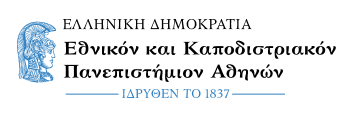Reconstructing the human skeleton: Sorting human skeletal elements from mass disasters
The “RecHumS” project will address the key issue of sorting commingled human remains, by amalgamating state-of-the-art techniques in three dimensional geometric morphometrics and machine learning. The “RecHumS” project will focus on matching the main elements of the lower and the upper skeleton (os coxae, femora, tibiae and humeri, ulnae respectively), which are the elements that provide basic biological profile information (age, sex and stature). The “RecHumS” project will have major implications in forensic anthropology as it will facilitate the identification of unknown subjects.
Despite numerous proposed methods, commingling remains a pressing issue. During excavation, the reassociation of mixed skeletons is partially possible based on the spatial distribution of the skeletal elements and taphonomic evidence. However, if the excavation takes place in the absence of an anthropologist, reassociation of the human remains in the lab is even more problematic. Histological and DNA analyses can be used for sorting commingled skeletons; however, the human skeleton has 206 bones and every one of them would have to be analyzed, rendering such approaches impractical in terms of time, cost and material destruction. Morphological reassociation of the elements that constitute a human skeleton is the most commonly adopted method. Osteometry is the main approach adopted as a means of quantifying morphological parameters. A major limitation of osteometric sorting methods is that they require a good preservation of the human skeleton. Another important limitation of these methods is that their effectiveness is hindered when applied on cases outside their reference sample.
Methods that could quantify the three-dimensional morphology of the skeletal elements of the lower and the upper limbs could hold great potential in sorting skeletal remains given that technologies, such as CT and 3D surface scanners, are increasingly being used in the field of forensic anthropology. Furthermore, the computational geometric feature extraction of the bones’ intrinsic morphology constitutes an analogy to visual observation methods that provide the most effective sorting method to date, whereas machine learning techniques, which have already proven their advantages in other fields such as computer vision and speech recognition, are incorporated to relax the requirements of highly trained professionals and the related reliability/repeatability limitations. The “RecHumS” project aims at filling this gap in currently available methods for sorting commingled human remains.

